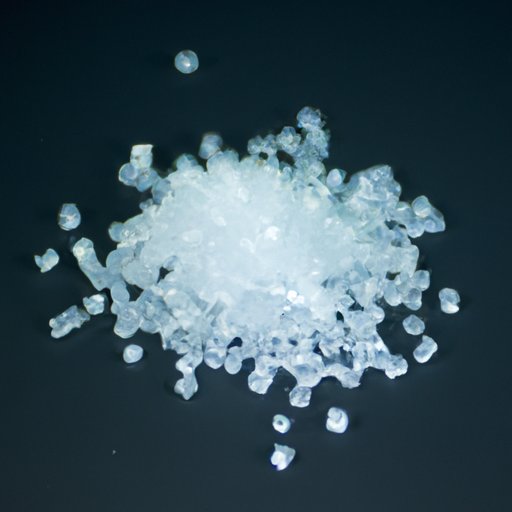I. Introduction
Polyurethane is a common material found in everyday life. Understanding what polyurethane is and how it works is important for everyone, not just the scientific community.
II. Polyurethane 101: Everything You Need to Know to Understand This Common Material
Polyurethane is a polymer made up of organic units linked by carbamate (urethane) links. It can be produced in a variety of forms such as flexible foams, rigid foams, and elastomers.
To make polyurethane, two main components are necessary – isocyanates and polyols. These components react together in a chemical reaction to create the end product.
Polyurethane’s key properties include its durability, versatility, and ability to resist compression and impact.
III. The Ins and Outs of Polyurethane: A Comprehensive Guide
Polyurethane’s manufacturing process includes a step called polymerization. During this step, the isocyanate and polyol react to form a polymer.
The types of polyurethane can range from rigid and flexible foams to coatings, adhesives, and sealants. These varieties of polyurethane have different properties based on their composition.
Polyurethane is widely used in many industries including automotive, construction, furniture, and packaging.
IV. Polyurethane: From Its Origins to Its Many Applications
Polyurethane was first developed and patented by German scientist Otto Bayer in 1937. The material’s versatility led to its extensive use in the decades that followed.
Today, polyurethane is used in a wide range of practical applications such as insulation, cushions, and even car parts. Its versatility has also led to research into new applications such as biomedical materials.
It’s worth noting that the composition of polyurethane can be altered to optimize certain properties for certain applications.
V. The Advantages and Disadvantages of Using Polyurethane in Everyday Life
The main benefit of using polyurethane is its versatility and durability. It can be produced in a variety of forms, making it applicable in many different industries.
One possible drawback of using polyurethane is the potential for environmental harm if not disposed of properly. Additionally, it can be relatively expensive to produce.
When compared to other materials like rubber or plastic, polyurethane often provides improved performance and durability. However, its use may not always be justified due to the cost of production.
VI. Exploring the Science Behind Polyurethane: How It Works and Why It Matters
Polyurethane’s unique properties stem from the chemical reaction involved in its formation. The isocyanate and polyol combine to create a polymer that is stronger and more durable than many other materials.
Understanding the science behind polyurethane is important for a wide range of industries that utilize the material in their products. Understanding the chemical reaction involved in the formation can lead to improvements in the material’s quality and production.
VII. Polyurethane in Action: Real-World Examples of Where and How It’s Used
Polyurethane is ubiquitous in everyday life, even if we don’t always realize it. The material can be found in furniture cushions, insulation, and even in the soles of our shoes.
In industry, polyurethane is often used in construction applications such as insulation and coatings. It can even be used in medical devices due to its biocompatibility.
VIII. Polyurethane vs. Other Materials: Comparing Cost, Durability, and Performance
When considering the best material to use for a particular application, several factors come into play including cost, durability, and performance.
While polyurethane often provides improved performance and durability, its cost of production can make it less practical than other materials. There are other considerations such as environmental impact and the availability of the material.
Choosing the right material for a particular application requires careful consideration of all of these factors.
IX. Conclusion
Polyurethane is a common material used in many industries and in everyday life. Understanding what polyurethane is and how it works can lead to improvements in its production and use, benefiting both industry and society as a whole.
While there are limitations to its use, polyurethane’s versatility and durability make it an important material to be familiar with for a range of applications.
